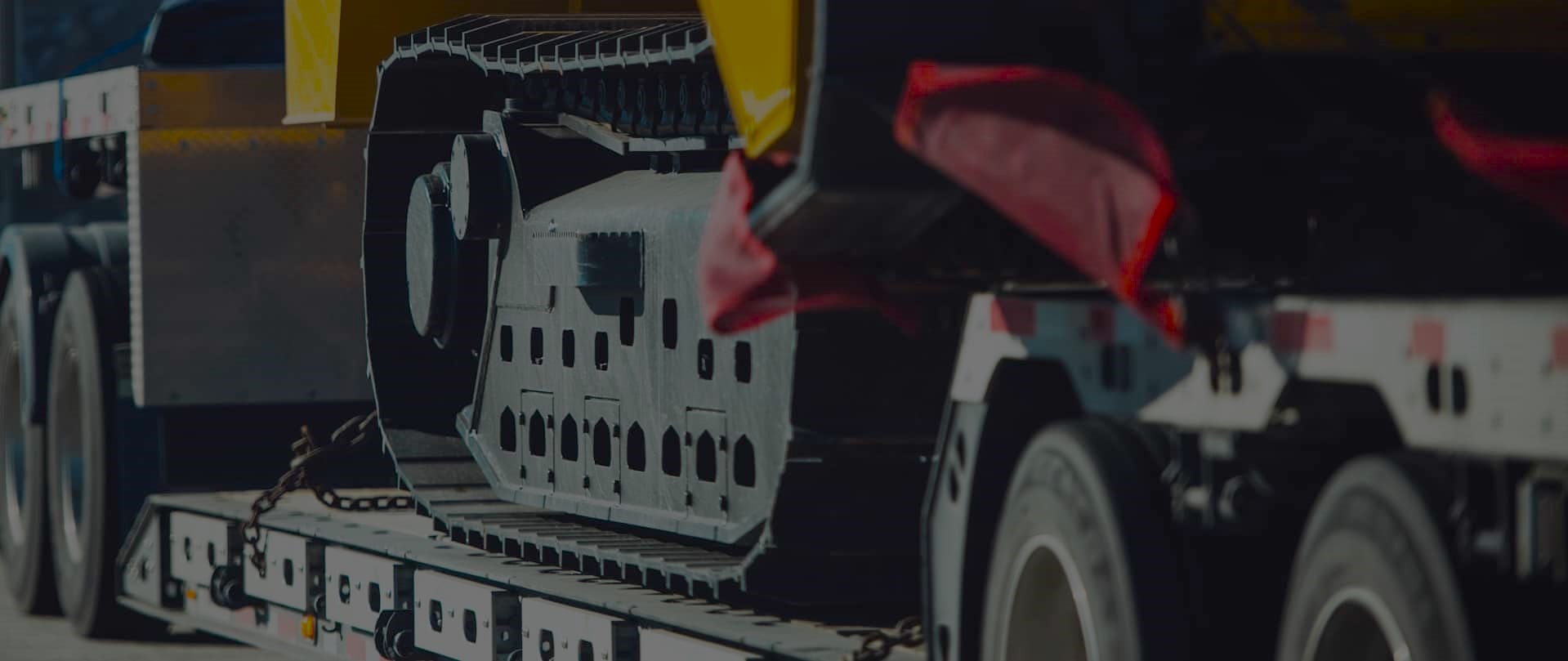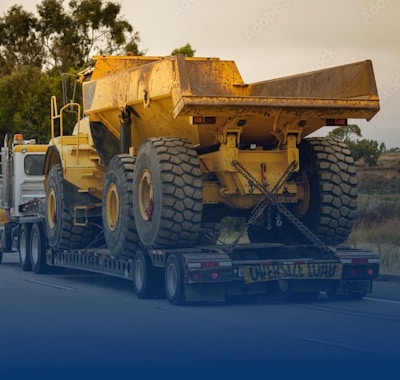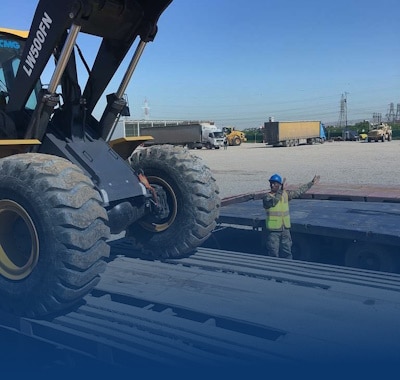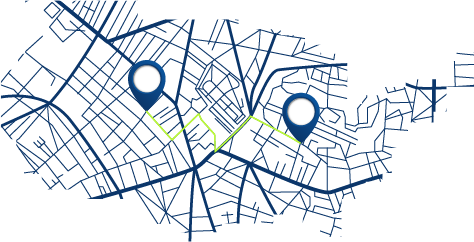West Coast Wildfires: Heavy Haul Reroute Planning for Closures
Freedom Heavy Haul can offer expedited Pickup and Delivery for any size shipment anywhere in the USA. Contact us today for No Hassle, No Pressure Pricing.
Quick context: Recent wildfire events forced sudden road limits and rapid route changes that delayed deliveries across key corridors. Emergency moves in Los Angeles sent traffic onto secondary roads and raised risks for drivers, ports, and local neighborhoods.
Why this matters: Los Angeles sits at the heart of a vast supply chain. When flames crossed major highways and power went out near the Ports of LA/Long Beach, dock work slowed and staff gaps widened. That ripple effect hits schedules and budgets fast.
This piece gives a friendly, practical roadmap for routing, site access, and continuity. We’ll cover real-time air alerts, monitoring tools, and detour options logistics teams use when visibility or smoke make normal lanes unsafe.
Who benefits: Operations leaders, dispatchers, drivers, and customers who need clear steps to keep freight moving. By the end, companies and services will have a confident framework to protect people and performance during fast-moving fires.
Why wildfire closures disrupt heavy haul across the West Coast
A single fire event can cascade through a supply chain, halting oversized shipments in hours. Authorities close key routes for safety or to allow emergency access, which instantly creates bottlenecks for carriers moving large loads.
In southern california, rugged hills and Santa Ana gusts make containment harder and force fast detours. When many drivers shift at once, traffic surges concentrate volumes on fewer corridors and raise delay risks.
On the road, air quality and visibility fall near active fronts. Smoke reduces pilot-car sight lines and slows convoy speeds, which compounds schedule risk for time-sensitive moves.
- First responders get priority use of ramps and lanes, shrinking capacity for oversized transports.
- Evacuations, school closures, and blocked streets cut crew availability at the worst time.
- Power loss or blocked access can slow gate hours and dock throughput, increasing turn times.
“Speed of verified information and flexible routing are the two most powerful levers to manage the impact of wildfire disruptions.”
For logistics companies and companies that serve ports near los angeles, the result is higher idle time, extra rehandles, and rising insurance exposure. The core takeaway is simple: sync trusted updates fast and keep routing options ready.
Current closure dynamics and what shapes them
Shifting flames, fuel loads, and terrain drive whether roads close fully or allow escorted convoys. Spotting across ridgelines or dense brush can force full lane shutdowns. In gentler terrain, agencies sometimes permit limited, timed convoys for essential moves.
Fire behavior, road limits, and emergency access priorities
Emergency services place life safety first. That often means ramps, shoulders, or whole segments are reserved for responders and evacuees. Rolling restrictions create unpredictable windows for commercial traffic and can last days on major corridors like I-5 and I-15.
Monitoring with CAL FIRE and the National Weather Service
Make CAL FIRE incident pages and NWS alerts your baseline for real-time information. Pair those feeds with DOT incident logs, CHP updates, and port advisories to triangulate timing.
Santa Ana events and high-wind warnings
Santa Ana episodes and high winds can widen fire fronts fast, push smoke over freeways, and cut safe work windows for crews. Poor air quality places workers at risk during outdoor tasks such as loading and unloading; use agency AQI flags to change shift lengths and PPE rules.
“Pre-define go/no-go triggers tied to wind speed, AQI, and proximity to corridors — then document time-stamped sources for every decision.”
- Use layered sources for situational awareness: CAL FIRE, NWS, DOT, CHP, port notices.
- Set clear triggers for dispatch based on wind, air, and fire proximity.
- Check conditions at planning, pre-trip, and mid-route — revalidate often.
Reroute playbook for California choke points and LA impacts
When key highways close near California fire zones, carriers must pick tested detours fast to keep freight moving. Use a short checklist to decide when to switch routes, who to notify, and what supplies to stage along the way.
I-5 and I-15 risk zones and delays
Map pinch points: the Grapevine on I-5 and I-15 toward the high desert see repeated incidents during california wildfires. Expect closures that can last up to a week and plan buffer time for shipments.
Alternatives: I-10 to US 95 option
If I-15 is not passable, route via I-10 east to US 95 north into Las Vegas, then reconnect to I-15. That option often adds about a day and a half and may require extra pilot-car time for oversized loads.
Ports of LA/Long Beach ripple effects
Even when fires sit outside port terminals, access roads, rail slots, and power outages can limit operations in los angeles. Coordinate ETAs with terminals and rebook slots early to reduce wait time.
Traffic surges, rail limits, and time-sensitive moves
When many carriers shift to the same detours, staging areas fill and speeds drop. Cross-check intermodal windows, pre-book fuel and parking, and secure alternate suppliers for securement gear and PPE.
“Route trees and clear 48–72 hour bulletins cut scramble and keep the supply chain steady.”
- Map the risk: tag historic fire segments on I-5 and I-15.
- Core detour: I-10 → US 95 → I-15; note added time and escort needs.
- Communicate: issue route bulletins to drivers and customers with ETA impacts.
| Issue | Likely impact | Mitigation | Lead |
|---|---|---|---|
| I-15 full shutdown | +36 hrs transit, pilot cars needed | Use I-10→US95 route; notify customers | Dispatch |
| Port access limits | Delayed drayage, fewer rail slots | Rebook appointments; pre-stage containers | Operations |
| Surge on detours | Lower speeds, staging shortages | Pre-book parking/fuel; shift windows | Carrier relations |
| High winds near passes | Escort speed caps; safety stops | Confirm max safe speeds; add escorts | Safety team |
West Coast wildfire closures and heavy haul reroute planning
Good emergency preparation turns a scramble into a routine response for freight teams. Build a written backbone so everyone knows who calls customers, who directs routes, and how services continue when access changes.
Annual drills, business continuity plans, and communication trees
Run full exercises each year to test generators, verify cloud backups, and confirm that remote sites can operate. Rehearsals expose gaps quickly so teams can fix them before a real event.
Create a simple communication tree that assigns customer contacts, dispatch leads, and local site owners. Use standardized templates for delay notices and proof-of-delay documents to speed outreach.
Technology-enabled situational awareness: mapping inventory, sites, and revenue at risk
Deploy dashboards that layer live fire perimeters with facility and inventory maps. That view helps quantify revenue at risk and prioritize which lanes or sites get scarce capacity first.
- Define the backbone: keep written plans and contact lists current.
- Centralize information: use mapping tools to link incidents with stock and routes.
- Keep essentials on hand: water, food, first aid, lighting, and fuel for generators.
“The right situational tools turn fragmented information into faster decisions and fewer service interruptions.”
Safety-first operations for drivers, crews, and customers
When air quality drops, simple rules and ready gear keep people safe and operations steady. Start each shift with a short safety brief tied to live air updates and a clear go/no-go rule for field work.
Air quality, visibility, and roadside risks: actionable safety tips
Monitor county dashboards before departure and during transit. Slow down in low visibility, increase following distance, and avoid roadside stops near recent burn scars where ash or flare-ups can appear.
- Set triggers: suspend outdoor tasks when AQI reaches unhealthy levels.
- Equip drivers with spare N95/P100 masks and eye protection in every cab.
- Define rally points and alternate routes for quick evacuation if conditions worsen.
PPE and mask guidance for smoke and ash exposure in Los Angeles County
LACDPH advises staying indoors when smoke is present, using recirculating A/C, and wearing N95 or P100 respirators for prolonged outdoor work. Upgrade HVAC to MERV 13 filters where possible and keep HEPA purifiers for site offices.
“Seek medical help for severe coughing, shortness of breath, or chest pain.”
Debris, ash cleanup considerations and pet safety basics near fire zones
Dampen ash before cleanup and avoid dry sweeping or vacuuming. Use a damp cloth for dust, and follow los angeles county disposal rules and published haul routes for debris removal.
Keep pets indoors during poor air, watch for respiratory distress, and seek veterinary care when needed. Share testing resources: mobile blood lead checks and CLEAN initiative links via county advisories.
| Risk | Immediate action | Equipment | Lead |
|---|---|---|---|
| Poor air quality | Stop outdoor work; move crews indoors | N95/P100 masks, HEPA purifiers | Safety officer |
| Low visibility on route | Reduce speed; reroute if needed | High-visibility vests, spare lights | Dispatch |
| Ashy work sites | Dampen before cleanup; follow county haul rules | Wet mops, sealed bags, respirators | Site manager |
| Evacuation order | Execute rally plan; notify customers | Prepacked kits, evacuation maps | Operations lead |
Insurance realities during fire season
Understanding coverages before a season of risk saves time and cash after an incident. Property policies protect buildings and contents from direct damage. Business continuity coverages often have high deductibles and suit long-term losses. Contingency business interruption only triggers for named, physically damaged locations.
Policy clarity and dependent sites
Ask insurers which sites are listed. If your company uses 3PLs or contract manufacturers, name those facilities in contingency wording to preserve cover.
Premiums, exclusions, and proactive outreach
Call brokers before peak fires to confirm exclusions, reporting needs, and acceptable proof. Keep photos, inventory lists, and time-stamped route logs ready to speed claims.
“Pre-assemble claim files and assign an internal claims captain for peak season readiness.”
- Check deductibles; small losses may fall to reserves.
- Verify insured values for inventory in-transit and at rest to protect the supply chain.
- Store broker contacts and insurer hotlines in your resources page.
- Document smoke and air impacts even when no burn damage occurred.
Keeping the supply chain moving when closures persist
When road access stays limited for days, companies shift from short fixes to a set of repeatable moves that protect service.
Buffer stock and pre-positioning outside high-risk areas
Pre-stage select SKUs in safer areas each season so core supply stays near demand while backups sit ready. This balances carrying cost with service and avoids long disruptions to customers.
Power outages and rolling blackouts: generator readiness and cold chain
Size and test generators to support docks, IT systems, and reefer plugs. Validate reefer set points, add fuel plans for longer dwell, and confirm remote monitoring to keep product within spec.
Staffing during evacuations: access, scheduling, and third-party dependencies
Cross-train teams, pre-assign remote roles, and align carriers, brokers, and 3PLs on staging yards to bypass blocked road segments.
- Flex routes: adjust shifts, HOS, and appointment times for added time on detour corridors.
- Standardize check-ins: scheduled status calls to confirm site access, crew readiness, and road reports during prolonged events.
- Measure impact: track service level, dwell, OTP, and spoilage to justify buffer moves and route choices.
“Update buffer lists and staffing playbooks after each event to get stronger every season.”
Local resources and emergency information for Los Angeles and beyond
Keep a compact resource list on hand so dispatchers and drivers can find help fast during an incident. Below are verified contacts, dashboards, and field services to support staff, displaced customers, and on-site operations across los angeles county.
Key contacts and recovery hubs
Mission-critical numbers for immediate use:
- LA County Emergency portal: lacounty.gov/emergency
- Fire Dept. Public Info: 323-881-2411
- Public Works debris line: 800-675-HELP (800-675-4357)
- FEMA assistance & TSA hotels: 800-621-3362
Disaster Recovery Centers operate daily at UCLA Research Park West (10850 W Pico Blvd) and Altadena (540 W Woodbury Rd) from 9 a.m.–7 p.m.
Air data, shelters, and animal support
Monitor live air quality with AirNow, SCAQMD, and the LA County Environmental and Health Dashboard for AQI alerts and health guidance.
For shelter and short-term housing, call 211 LA for Red Cross sites, Airbnb.org placements, and local hotel offers available to evacuees in angeles county.
County Animal Care Centers and large-animal evacuation sites help employees and customers move pets and livestock safely.
Debris, permits, and operational notes for logistics
LA County Recovers centralizes debris removal and Right of Entry (ROE) tracking. Army Corps leads Phase 2 removals in defined haul routes; debris scheduling help: 213-308-8305.
Practical tip: Keep one-pagers with these contacts in every dispatch kit and driver packet. Document calls, receipts, and timestamps for claims and site access reviews.
“Verify portals and hotlines daily — program numbers into dispatch systems for instant access.”
| Need | Contact / Portal | Hours | Notes for operations |
|---|---|---|---|
| Emergency info | lacounty.gov/emergency | 24/7 | Primary source for los angeles county directives |
| Debris & ROE | Public Works 800-675-4357; debris center 213-308-8305 | Business hrs | Use ROE for scheduled debris haul and yard access timing |
| Shelters & housing | 211 LA / FEMA TSA hotels | Varies | 211 links to shelters, Airbnb.org, and hotel programs |
| Air quality | AirNow / SCAQMD / LA County Dashboard | Live updates | Trigger indoor work and PPE rules based on AQI |
From reactive to resilient: a season-by-season heavy haul roadmap
Turn lessons from last year into clear steps that protect supply, crews, and customer commitments each season.
Set a simple seasonal cadence: audit exposure in late winter, pre‑position supply in spring, run summer drills, and validate gear before peak fires. Embed weather feeds for high winds and Santa Ana alerts so routes and driver advisories update fast.
Harden yards with generators, confirm reefer backups, and stage fuel, tow, and lodging along alternate corridors. Update insurance to name critical 3PLs and document loss‑prevention steps for claims.
Localize execution for los angeles county: map access, debris ops, and air quality triggers so logistics teams keep service for customers while crews work safely. Make resilience routine, not reactive.







